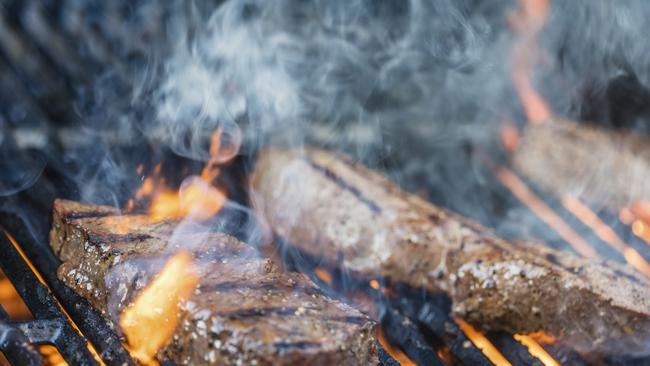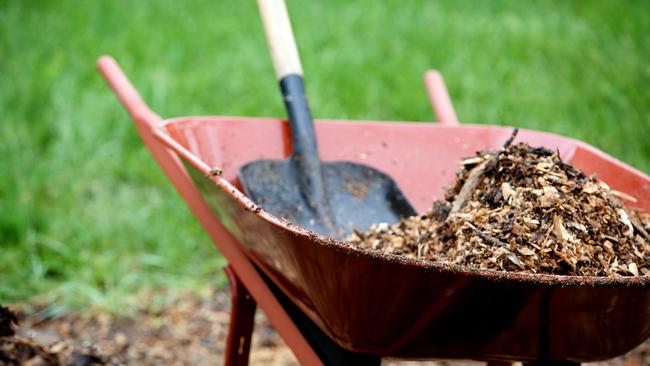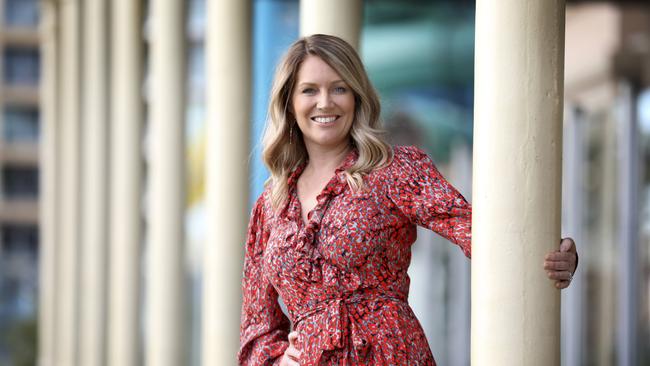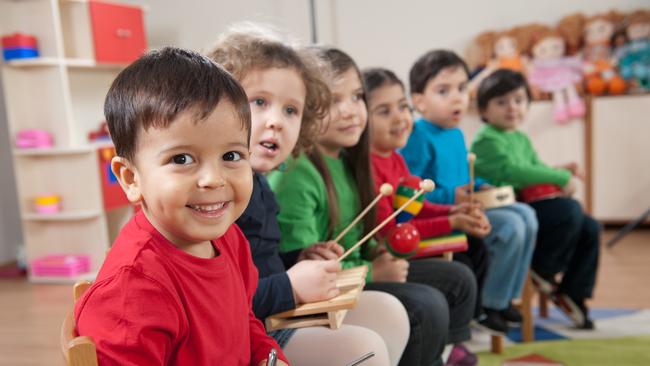Cost of COVID hits home as prices rise for consumers
The coronavirus recession has kept inflation extremely low, but a surprising number of household costs have climbed. See the list and how you can reset your budget.
Coronavirus
Don't miss out on the headlines from Coronavirus. Followed categories will be added to My News.
Exclusive: Prices paid by consumers for a majority of household items have climbed this year despite COVID-19 causing Australia’s biggest economic downturn since the Great Depression.
While sharp falls in fuel and childcare costs have provided some relief, a News Corp Australia analysis of detailed Bureau of Statistics data found prices rose in two-thirds of product categories.
Household appliances, textiles and tobacco costs have surged more than 8 per cent, while almost all grocery prices are higher – led by an 8 per cent jump in vegetables.
The Consumer Price Index inflation was identical in the 2020 September quarter to 2019’s December quarter, after recovering from a sharp fall between April and June.
The Australian Bureau of Statistics monitors inflation in more than 120 different categories of goods and services, with significant price rises this year in beef, drinks, jams and garden tools.

That was offset by falling prices for childcare, petrol, transport and utilities.
Economists said COVID-19 has changed the supply and demand forces for many products. Prices rise when consumers want more of something or it’s difficult for retailers to source it.
PwC chief economist Jeremy Thorpe said people’s behaviours had changed during the pandemic.
“We know that people are cooking more at home, buying raw ingredients,” he said.
“People have improved their homes and spent money on things in their home.”
While the ABS data shows electricity, gas and water prices dropped, Mr Thorpe said usage had surged.
“People have been working from home and seeing very large increases in energy bills,” Mr Thorpe said.
“Even as the price has fallen they are using more of it and had a bit of a shock when they have seen their power bills.”
MyBudget director Tammy Barton said she had seen an increase in household budgeting and bargain hunting, with some people using government stimulus payments to buy appliances.
“We have also seen an increase in online food shopping where clients have been able to search for specific specials and discounts,” Ms Barton said.
She said MyBudget had seen an 11 per cent jump in utility bills in 2020 as people worked from home.
“Some key utility providers such as Origin Energy have announced reductions ongoing to assist their customers.”
Rising utility bills were offset by falling costs in carparking, travel and work-related expenses, Ms Barton said.
Prices of clothing, footwear and accessories are down, and Australian Retailers Association CEO Paul Zahra said the working-from home trend had resulted in lower demand.
“There’s less events and outings and people are nesting – these trends have been present all year and will continue until we find a new normal, particularly as far as events and working life are concerned,” he said.
“People don’t need to dress up so they’re wearing casual outfits.”

KPMG chief economist Brendan Rynne said there had been prices rises in imported goods where COVID had affected the supply of products “even though demand has decreased a little because people have lost jobs and wages”.
Dr Rynne said lower fuel prices reflected global declines in oil prices, while child care costs had dropped as a result of higher government subsidies.
He said inflation was unlikely to rise sharply.
“My expectation is it’s going to stay flat for some time,” Dr Rynne said. “Global costs may be higher, but offset by softer domestic prices.”
Mr Thorpe said households overall had been saving more, helped by falling interest rates and banned international travel.’
“There’s $20 billion of overseas travel in net terms that we are not doing,” he said.
Mr Thorpe said he did not expect high inflation appear in the next few years, but a slight rise was likely as borders reopened.
CHANGING PRICES FOR CONSUMERS
GOING UP
Major appliances 10.2%
Household textiles 9.2%
Tobacco 8.1%
Vegetables 8%
Small appliances 6.3%
Beef and veal 5%
Jams and honey 4.6%
Water, juice, soft drinks 4.2%
Lamb and goat 4.1%
Garden tools 3.6%
GOING DOWN
Childcare -25%
Fuel -17%
Transport fares -5%
Men’s shoes -4.3%
Preschool, primary school -4.2%
Domestic travel -3.6%
Water -3.3%
Communications equipment -2.3%
Electricity -1.8%
Clothing accessories -1.8%
(Source: Australian Bureau of Statistics, December quarter 2019 to September quarter 2020)

FUEL FALLS HELP OFFSET HIGHER GROCERIES
Budgeting has been a big focus for the Balmer family during the COVID-19 pandemic and they have spotted some increasing household costs.
“We have noticed watermelon, strawberries, bananas and read meat have definitely gone up a bit,” Mrs Balmer, 37, said.
“We’re not eating as much red meat this year as we generally would,” she said.
However, higher costs had been offset by lower petrol prices, Mrs Balmer said.
The family has used the COVID-19 period to work on improving their household finances.
“This year we have really had a look at our budgeting,” Mrs Balmer said.
“We have a better budget in place, and rather than little shops here and there we do one big shop at the start of the week to get everything sorted.”
HOW TO HANDLE RISING COSTS
1. Organise your money and focus on what you can control.
2. Create a household budget for a detailed picture of your finances.
3. Review your spending, particularly recurring charges, for things you longer use.
4. Cut back on unnecessary expenses and shop around for better prices.
5. Check interest rates on credit cards and home loans and seek a better deal.
6. Compare what you’re paying for insurance and utilities. Switching providers often results in big savings.
7. Seek better deals for phone and internet services by comparing contracts online.
Source: MyBudget

ANALYSIS: A CRAZY YEAR FOR CONSUMERS
There’s nothing quite like a pandemic to turn shopping, spending and saving trends completely upside down.
The latest Australian Bureau of Statistics inflation data paints a wacky picture of COVID’s financial impact on households.
Things that had been falling in price for many years are suddenly going up.
Things that had been rising sharply for years are suddenly going down.
And things that we stopped doing years ago are being embraced wholeheartedly.
It’s all thanks to the coronavirus and its massive impact on the global economy, squeezing supply chains and imports and forcing everyone to change their behaviour.
Let’s look at household appliances, big and small. Their prices had been falling for more than a decade, according to the ABS figures, but this year have jumped 10 per cent and 6 per cent respectively.
As Aussies have spent more time at home in 2020, and many received cash windfalls from government stimulus or cancelled holidays, they’ve been looking at upgrading their stuff and spending up big.
Harvey Norman founder Gerry Harvey says the consumer spending surge that started in April and May has continued all though the year, and Christmas is looking good.
He says importing stuff is trickier than ever because of COVID-caused shipping and manufacturing delays – so we have both rising demand and shrinking supply. Perfect ingredients for higher prices.
Motor vehicle prices have been climbing this year, another result of global supply shenanigans.

On the flip side, frustrated Australians have been forking out extra dollars for rising electricity and gas costs for years, and now the ABS says prices have dropped this year.
Economists say that’s because of lower global energy prices – caused by lower demand – and transmission and distribution improvements. But households aren’t feeling the relief because many of us have been using our own airconditioning rather than our employer’s this year.
The other big COVID money change is that despite pathetically low interest rates paid on bank deposits, we’re saving more cash than we have for years. Some research suggests cash savings have tripled.
It’s partly because of fear and uncertainty sparked by the pandemic, and partly because people have had less chance to spend their money when so many fun things were stopped.
What happens beyond 2020 remains uncertain, so the best tips for consumers and savers are to have back-up money available, create a long-term financial plan, avoid knee-jerk reactions to short-term issues, and seek professional advice if uncertain.
When a vaccine gets rolled out and the world returns to normal you’ll want to be in a solid financial position for the inevitable economic rebound.
MORE NEWS
Five ways to get a cheaper home loan rate
How superannuation increases will impact your pay
Aussie shoppers ready to splurge big bucks on sales
Why Australia’s stoush with China is scary
Originally published as Cost of COVID hits home as prices rise for consumers



